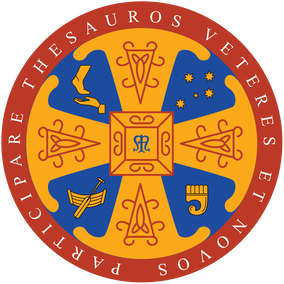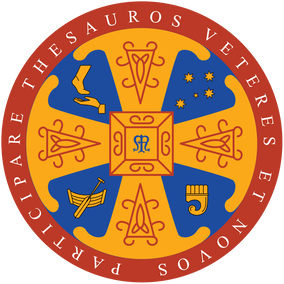Objects of Saint Theodore of Canterbury Inc.
The Objects of the Association are:
(a) To found and operate a day and boarding Catholic Grammar School for children aged 5-18, as an educational establishment in Western Australia compliant with all relevant Commonwealth and State legislation;
(b) To specialise as an educational establishment in teaching all pupils:
(c) To provide faithful, rigorous and orthodox Catholic religious education, in fidelity to the Roman Pontiff and conformity with the Catechism of the Catholic Church; and to foster the practice of the Catholic Faith according to the particular spiritual, cultural, and intellectual patrimony of the Personal Ordinariates, especially as expressed by Pope Benedict XVI in the Apostolic Constitution, Anglicanorum Coetibus (2009), and as expressed in the Complementary Norms of Anglicanorum Coetibus (revised 2019), and regulated by the Code of Canon Law of the Catholic Church.
(d) To assist parents, substantially and wholeheartedly, in their role as the prime educators of their children according to the teaching of the Catholic Church.
(e) To educate young people in such ways as to help them come to full personal maturity in Christ, and to assist them to become constructively engaged citizens of Australia and lights of the world in their several generations.
(f) Through the educational and training provision of the school, and through forging links to the local community, to foster wider community involvement in the arts and other activities of the school, especially by the development and operation of a performing arts centre at the school and other sporting and recreational facilities either on or off-campus as may be expedient for the co-curricular provision of the school.
(g) To promote the Personal Ordinariate of Our Lady of the Southern Cross through the religious provision of the School, particularly through the Sacred Liturgy, the Divine Office and the devotional practices of the Personal Ordinariate as expressed particularly in the ecclesiastically approved devotional and liturgical books of the Personal Ordinariates.
(h) Within the context of a classical educational framework, and recognising the value of traditional forms of learning, to provide for a true engagement with Aboriginal and Torres Strait Islander peoples, cultures, stories, languages and spiritualities, walking together towards mutual understanding and edification, that is consonant with the mission and teachings of the Catholic Church and of the Personal Ordinariate of Our Lady of the Southern Cross.
(i) In suchwise as they are consonant with Catholic teaching, following from the principles as enunciated by the philosopher Aristotle, especially as expressed in The Nicomachaean Ethics, The Rhetoric, and The Poetics, to utilise classical pedagogical methods, principles, and content, especially, but not exclusively, as found in Charlotte Mason's, Philosophy of Education, David V. Hicks's, Norms and Nobility: A Treatise on Education, Sister Miriam Joseph's, The Trivium: The Liberal Arts of Logic, Grammar and Rhetoric, and Baldassare Castiglione's, Il Cortegiano (The Book of the Courtier), in order to help young people discover groundedness (stabilitas), utility (utilitas), and beauty (venustas) through their learning; and, where possible, to teach ancient, medieval and modern history, and the seven liberal arts (grammar, logic, rhetoric, arithmetic, geometry, music, and astronomy).
The Objects of the Association are:
(a) To found and operate a day and boarding Catholic Grammar School for children aged 5-18, as an educational establishment in Western Australia compliant with all relevant Commonwealth and State legislation;
(b) To specialise as an educational establishment in teaching all pupils:
- (i) the classical languages of Latin and Ancient Greek; and
- (ii) the great works of classical and English literature and the ability to read and understand them; and
- (ii) the classical performing Arts being classical music, classical dance, and classical drama, either within the curriculum or as co-curricular activities.
- (iv) the dignity of the human person and their supreme value as beloved children of God.
- (v) the knowledge and skills necessary to think critically in order to act wisely and worthily, and to be able to realise their own self-expression of their thinking and feelings to others in fraternity and charity.
(c) To provide faithful, rigorous and orthodox Catholic religious education, in fidelity to the Roman Pontiff and conformity with the Catechism of the Catholic Church; and to foster the practice of the Catholic Faith according to the particular spiritual, cultural, and intellectual patrimony of the Personal Ordinariates, especially as expressed by Pope Benedict XVI in the Apostolic Constitution, Anglicanorum Coetibus (2009), and as expressed in the Complementary Norms of Anglicanorum Coetibus (revised 2019), and regulated by the Code of Canon Law of the Catholic Church.
(d) To assist parents, substantially and wholeheartedly, in their role as the prime educators of their children according to the teaching of the Catholic Church.
(e) To educate young people in such ways as to help them come to full personal maturity in Christ, and to assist them to become constructively engaged citizens of Australia and lights of the world in their several generations.
(f) Through the educational and training provision of the school, and through forging links to the local community, to foster wider community involvement in the arts and other activities of the school, especially by the development and operation of a performing arts centre at the school and other sporting and recreational facilities either on or off-campus as may be expedient for the co-curricular provision of the school.
(g) To promote the Personal Ordinariate of Our Lady of the Southern Cross through the religious provision of the School, particularly through the Sacred Liturgy, the Divine Office and the devotional practices of the Personal Ordinariate as expressed particularly in the ecclesiastically approved devotional and liturgical books of the Personal Ordinariates.
(h) Within the context of a classical educational framework, and recognising the value of traditional forms of learning, to provide for a true engagement with Aboriginal and Torres Strait Islander peoples, cultures, stories, languages and spiritualities, walking together towards mutual understanding and edification, that is consonant with the mission and teachings of the Catholic Church and of the Personal Ordinariate of Our Lady of the Southern Cross.
(i) In suchwise as they are consonant with Catholic teaching, following from the principles as enunciated by the philosopher Aristotle, especially as expressed in The Nicomachaean Ethics, The Rhetoric, and The Poetics, to utilise classical pedagogical methods, principles, and content, especially, but not exclusively, as found in Charlotte Mason's, Philosophy of Education, David V. Hicks's, Norms and Nobility: A Treatise on Education, Sister Miriam Joseph's, The Trivium: The Liberal Arts of Logic, Grammar and Rhetoric, and Baldassare Castiglione's, Il Cortegiano (The Book of the Courtier), in order to help young people discover groundedness (stabilitas), utility (utilitas), and beauty (venustas) through their learning; and, where possible, to teach ancient, medieval and modern history, and the seven liberal arts (grammar, logic, rhetoric, arithmetic, geometry, music, and astronomy).

